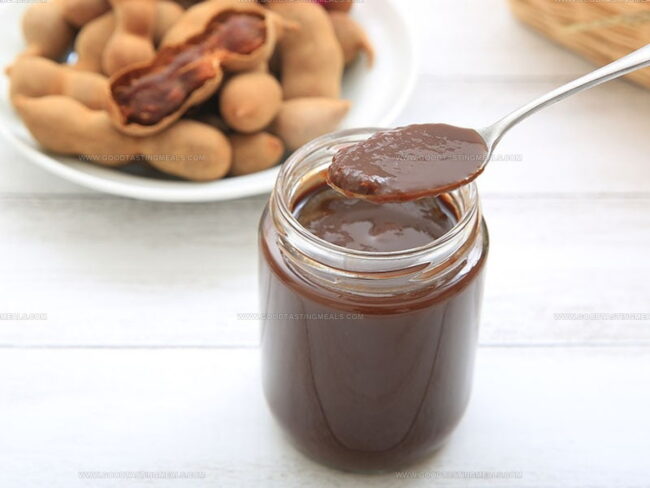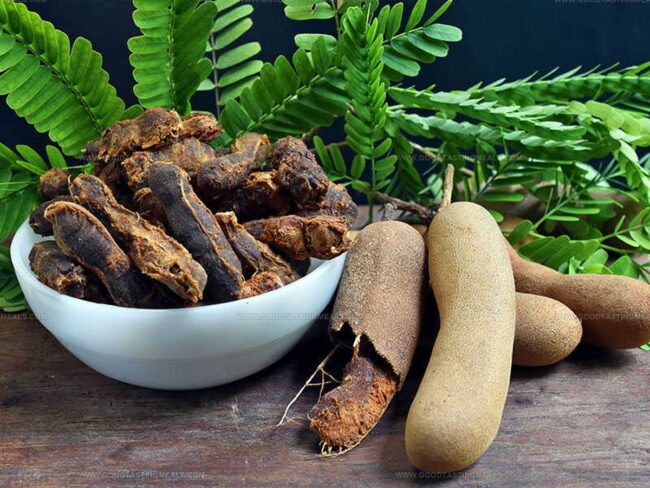10 Flavorful Alternatives to Tamarind Paste for Quick Kitchen Swaps
Tamarind paste delivers a tangy, slightly sweet, and sour punch fundamental to many Asian, Middle Eastern, and Latin dishes.
When tamarind paste isn’t available, substitutes such as lemon juice with brown sugar, vinegar with date syrup, or amchur powder can approximate its complex flavor.
Each alternative offers a different balance of acidity and sweetness, requiring adjustments to maintain harmony.
These ten best tamarind paste substitutes provide flexible options to keep your recipes authentic and vibrant.
Knowing how to balance sourness and sweetness helps maintain the original dish’s character.
Whether making pad thai, chutneys, or marinades, these alternatives have you covered.
Learn how to recreate tamarind’s distinctive taste with accessible ingredients.
What Tamarind Paste Brings to Recipes
Tamarind paste adds a bright, tangy-sweet layer that cuts through rich or spicy dishes. It carries a gentle fruitiness that lifts sauces, curries, and marinades, giving them a rounded sour note without harshness.
A small spoonful can deepen the overall flavor, adding complexity to soups or stews and balancing sugar or chili heat.
Its sticky, smooth texture also helps thicken thin liquids, so it works as both a flavor booster and a natural thickener in one.
Picking The Best Substitutes for Tamarind Paste
Tamarind paste has a sweet-tart tang. Without it, you can still capture that unique flavor balance. It’s all about finding the right replacement.
Lime Juice & Brown Sugar
Homemade tamarind paste alternatives can save your recipe when the real thing isn't available.
Mixing lime juice with brown sugar creates a remarkably similar flavor profile, delivering that essential sweet-and-sour punch that many Asian and Middle Eastern dishes require.
The thickness of this mixture closely resembles authentic tamarind paste, and the color match is surprisingly good too.
For perfect results, simply combine equal parts lime juice and brown sugar in a 1:1 ratio - so 1/2 tablespoon of each will replace 1 tablespoon of tamarind paste in your cooking.
Most people can't even tell the difference once the substitute is incorporated into curries, pad thai, or chutneys.
Lemon Juice & Brown Sugar
Substituting ingredients is a lifesaver when you're missing something crucial for your recipe.
Lemons work perfectly as replacements for limes, delivering that essential sweet-sour flavor profile that many dishes need.
The simple combination of lemon juice and brown sugar creates an excellent alternative to tamarind paste in a straightforward 1:1 ratio.
For best results, make sure the sugar completely dissolves to avoid any unwanted grittiness in your final dish.
This easy swap requires minimal effort- just mix equal parts lemon juice and brown sugar until smooth (½ tablespoon of each equals 1 tablespoon of tamarind paste).
Many cooks actually prefer this substitute because it uses common kitchen ingredients while maintaining authentic flavors in curries, dressings, and marinades.
Pomegranate Syrup
Pomegranate syrup stands as an excellent substitute for tamarind paste with its similar sweet-sour flavor profile and thick consistency.
Making this syrup at home requires just three simple ingredients: pomegranate juice, lemon juice, and white sugar combined in a 2:1/4:1/4 cup ratio.
The mixture should simmer until it reduces by half, creating a syrupy texture that matches tamarind paste perfectly.
For your cooking convenience, the substitution works on a 1:1 ratio, meaning one tablespoon of pomegranate syrup directly replaces one tablespoon of tamarind paste.
Most kitchens might not stock pomegranate syrup, but juice is commonly available and easily transformed into this versatile substitute.
Worcestershire Sauce
Substituting Worcestershire sauce for tamarind paste offers a convenient solution when your recipe calls for that distinctive tangy flavor but your pantry comes up short.
This fermented condiment combines anchovies, vinegar, molasses, garlic, and onion into a savory blend that mimics tamarind's complex sweet-sour profile, even though their ingredient lists differ significantly.
The swap works as a simple 1:1 replacement- one tablespoon of Worcestershire sauce perfectly replaces one tablespoon of tamarind paste in most dishes.
The rich umami undertones in Worcestershire sauce develop during its lengthy barrel aging process, which sometimes extends for months or even years.
Rice Vinegar
Substituting tamarind paste with rice vinegar offers a practical solution for Asian cooking enthusiasts who might be missing this key ingredient.
Rice vinegar delivers a similar tangy-sweet flavor profile that works beautifully in most recipes calling for tamarind paste, making it an excellent 1:1 replacement option.
The main difference lies in consistency since rice vinegar lacks the thick, rich texture that tamarind paste provides to dishes.
For best results, you may want to reduce the amount slightly to prevent making your dish too watery, or consider adding a tiny bit of brown sugar to enhance the sweetness that might otherwise be missing.
Most home cooks find this substitute works perfectly in stir-fries, pad thai, and various curries where the slight difference in thickness won't significantly impact the final dish.
Amchur Powder
Amchur powder, made from dried and ground unripe mangoes, offers a delightful sour and fruity taste that can transform your Indian dishes with its zingy punch.
This tangy spice, which means "mango powder" in Hindi, is an excellent substitute for tamarind paste in your favorite recipes.
The substitution couldn't be simpler - just use an equal amount of amchur powder whenever a recipe calls for tamarind paste (1 tablespoon for 1 tablespoon).
Such straightforward swaps help expand your cooking options without sacrificing the traditional flavors that make Indian cuisine so special.
Mango Chutney
Mango chutney ranks as the top substitute for tamarind paste due to its similar vinegar-based acidity and complex flavor profile that mimics tamarind's unique depth.
The convenient jar-to-recipe application makes this alternative particularly appealing for home cooks who need a quick solution without compromising taste.
Its comparable thickness ensures your dishes maintain the right consistency, which matters especially in traditional recipes calling for tamarind's distinctive texture.
The simple 1:1 replacement ratio takes all guesswork out of the substitution process, allowing you to confidently use exactly the same amount as the recipe requires.
Pomegranate syrup can also work in a pinch, offering another accessible option when tamarind paste remains elusive in your local stores.
Marmalade
Bitter oranges mixed with sugar create marmalade, a perfect substitute for tamarind paste due to its similar sweet, sticky, and tart qualities.
This replacement works best in recipes that complement orange flavors, such as certain Asian chicken dishes or desserts, though it may add an unexpected citrus note to your cooking.
The swap is straightforward- simply use equal amounts of marmalade in place of tamarind paste (1 tablespoon for 1 tablespoon).
Some cooks might find marmalade a bit too sweet for savory dishes, so a quick squeeze of lemon or lime juice can balance the flavor profile perfectly.
Many home chefs appreciate this substitution because the ingredients are commonly found in most kitchens, making it an accessible option when tamarind paste isn't available.
Fruit Syrups
Tamarind paste substitutes can save your recipe when this exotic ingredient isn't in your pantry, with fruit syrups standing out as the most versatile option.
These sweet, sticky alternatives work perfectly in desserts and can be balanced with a splash of lemon or lime juice when a tangy flavor is needed.
The simple 2:1 ratio (half tablespoon of fruit syrup for each tablespoon of tamarind paste) makes conversion easy, though many cooks adjust to taste depending on their dish.
Other substitutes like pomegranate molasses or rice vinegar mixed with brown sugar can mimic tamarind's unique flavor profile but may alter the color or consistency of your final dish.
For best results, remember that no substitute perfectly captures tamarind's complex sweet-sour profile, so small test batches might help you find the perfect balance for your specific recipe.
Dried Tamarind Pulp
Making homemade tamarind paste is easier than most people realize, especially when dried tamarind is the only option at hand.
Soaking dried tamarind in water starts the simple process of creating a perfect substitute for store-bought paste.
After the tamarind softens, removing any seeds hidden within the pulp ensures a smooth consistency in your final product.
The pulp can then be mixed with water until it reaches that ideal paste-like texture many recipes call for.
This homemade version works perfectly as a one-to-one replacement in any dish requiring tamarind paste.
For accurate measurements, one tablespoon of your freshly made pulp paste equals exactly one tablespoon of commercial tamarind paste in recipes.
Ideal Tamarind Paste Substitutes for Beverages
When you want that tangy-sweet kick in drinks but can’t reach for tamarind paste, these easy swaps bring both flavor and balance.
Fruit Syrups with Citrus Twist
A fruit-based syrup (like date, pomegranate, or maple) mixed with a squeeze of lime or lemon juice gives a rounded sweetness and bright acidity.
This combo mirrors tamarind’s fruitiness and tang, and you can adjust the juice-to-syrup ratio for more sour punch or gentle sweetness.
Shrub-Style Vinegar Blends
Blending vinegar (apple cider, rice, or red wine) with simple syrup makes a classic “shrub” mixer that adds tart depth and a touch of sweetness.
Shrubs dissolve well in cold or sparkling drinks, offering a clean sour note without bulk.
Concentrated Fruit Molasses
Pomegranate or date molasses brings thick body and a deep fruity-sour flavor close to tamarind paste.
Use sparingly, a little goes a long way, to add complexity in cocktails like margaritas or dark spirits.
Flavor Adjustments When Using Tamarind Paste Alternatives
As using tamarind paste substitutes, there will be minor flavor changes, so save these notes to make sure the best result.




